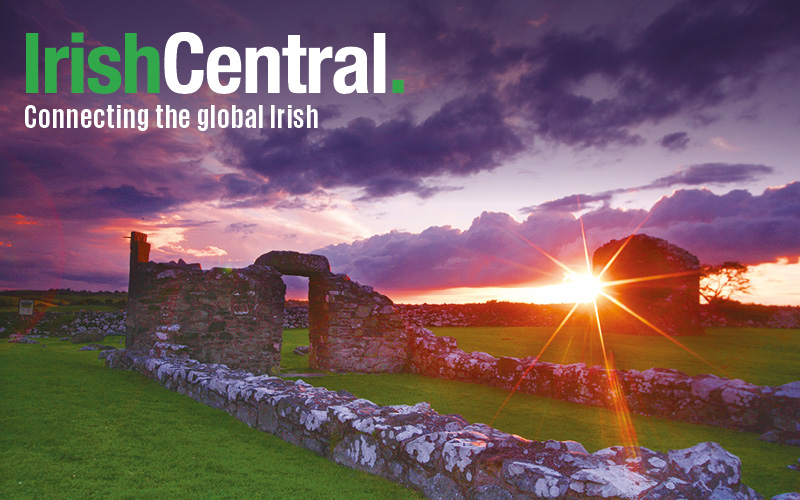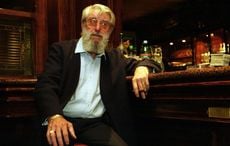I have just received a notice about an Irish diaspora convention to be held in Buenos Aires in June 2011, 90 years after a major one was held there in 1921.
Back then it was called an Irish race convention. It was put together at a time when Irish independence was being fought for at home as a way of showing the British, and indeed the U.S., that the Irish had worldwide clout.
The provisional Irish government sent an emissary, Laurence Grinell, to the convention, and it was considered important enough that The New York Times covered it.
The paper reported: “A proposal to seek the establishment of consulates by Argentina and Ireland and in Buenos Aires and Ireland,” was passed.
Argentina, of course, was the site of a major Irish settlement in the 1800s. They were led there in Famine times mainly from the Irish midlands by an heroic Irish priest, Father Anthony Fahey, who decided they would leave Ireland rather than starve in the Famine. About 45,00 Irish left for Argentina is it estimated.
As a history of that period notes, “The passage ticket cost was significantly higher -- about four times -- than the one to North America, with an average of £16 per adult passenger in steering... several tickets were advanced by the employers in Argentina, so the emigrants would work for them during one year to pay for the expenses of their journey.”
Today the descendants of those Irish continue to thrive in Argentina. They have their own newspaper, The Southern Cross, and they sent representatives to the diaspora forum hosted by the Irish government at Farmleigh in Dublin last year.
Now in 2011 they will host an Irish diaspora conference, a tangible link between the past and the present and at a very timely moment when emigration is once more rampant from Ireland.
Irish race conventions, where Irish abroad tried to influence British policy in Ireland, were popular in the 19th and early 20th centuries.
The first was in Chicago in 1881 when Charles Stewart Parnell, on the trail of Home Rule, met with leaders of the Clan Na Gael movement, the Irish Land League and the Fenians to discuss a common strategy.
Another convention was held in Dublin in 1896 after the defeat of two Home Rule bills, and after Parnell had died a broken man. It was in attempt to rally the troops that the convention was held.
The idea had come from Archbishop Walsh of Toronto who said, "Let a great national convention be held in Dublin, composed of chosen representatives of the clergy and people of Ireland and of an advisory representation of the Irish race abroad.” Pope Leo XII sent a message of support.
Another race convention was held in New York in 1916 just weeks before the Easter Rising. The very influential Irish group the Friends of Irish Freedom was formed at that convention.
The Friends held another race convention in 1918 in New York, and again in Philadelphia in 1919, this time with 5,000 delegates to discuss the declaration of the Irish Republic by Sinn Fein after the 1918 election.
The final major convention was held in Paris in 1922 to consider the Anglo Irish Treaty, which partitioned Ireland.
Back then it was called an Irish race convention. It was put together at a time when Irish independence was being fought for at home as a way of showing the British, and indeed the U.S., that the Irish had worldwide clout.
The provisional Irish government sent an emissary, Laurence Grinell, to the convention, and it was considered important enough that The New York Times covered it.
The paper reported: “A proposal to seek the establishment of consulates by Argentina and Ireland and in Buenos Aires and Ireland,” was passed.
Argentina, of course, was the site of a major Irish settlement in the 1800s. They were led there in Famine times mainly from the Irish midlands by an heroic Irish priest, Father Anthony Fahey, who decided they would leave Ireland rather than starve in the Famine. About 45,00 Irish left for Argentina is it estimated.
As a history of that period notes, “The passage ticket cost was significantly higher -- about four times -- than the one to North America, with an average of £16 per adult passenger in steering... several tickets were advanced by the employers in Argentina, so the emigrants would work for them during one year to pay for the expenses of their journey.”
Today the descendants of those Irish continue to thrive in Argentina. They have their own newspaper, The Southern Cross, and they sent representatives to the diaspora forum hosted by the Irish government at Farmleigh in Dublin last year.
Now in 2011 they will host an Irish diaspora conference, a tangible link between the past and the present and at a very timely moment when emigration is once more rampant from Ireland.
Irish race conventions, where Irish abroad tried to influence British policy in Ireland, were popular in the 19th and early 20th centuries.
The first was in Chicago in 1881 when Charles Stewart Parnell, on the trail of Home Rule, met with leaders of the Clan Na Gael movement, the Irish Land League and the Fenians to discuss a common strategy.
Another convention was held in Dublin in 1896 after the defeat of two Home Rule bills, and after Parnell had died a broken man. It was in attempt to rally the troops that the convention was held.
The idea had come from Archbishop Walsh of Toronto who said, "Let a great national convention be held in Dublin, composed of chosen representatives of the clergy and people of Ireland and of an advisory representation of the Irish race abroad.” Pope Leo XII sent a message of support.
Another race convention was held in New York in 1916 just weeks before the Easter Rising. The very influential Irish group the Friends of Irish Freedom was formed at that convention.
The Friends held another race convention in 1918 in New York, and again in Philadelphia in 1919, this time with 5,000 delegates to discuss the declaration of the Irish Republic by Sinn Fein after the 1918 election.
The final major convention was held in Paris in 1922 to consider the Anglo Irish Treaty, which partitioned Ireland.




Comments